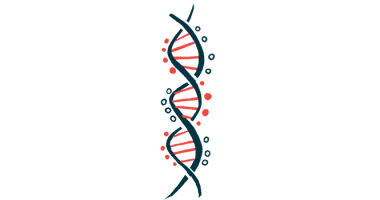Genetic Testing May Identify New Gene Mutations in EDS: Study

A genetic testing technique called next-generation sequencing (NGS) may help unveil unrecognized disease-causing mutations linked with Ehlers-Danlos syndrome (EDS) and related disorders, a Polish study suggests.
The study, “Next-Generation Sequencing of Connective Tissue Genes in Patients with Classical Ehlers-Danlos Syndrome,” was published in Current Issues in Molecular Biology.
EDS comprises a group of genetic disorders affecting the connective tissue that provides structure to joints, skin, and other tissues. Patients often have overly mobile and soft joints, as well as fragile skin.
To date, mutations in at least 20 different genes have been associated with EDS. Mutations in three genes — COL5A1, COL5A2 and COL1A1 — cause classical EDS (cEDS), one of the 13 disease subtypes. All these genes have information for making types of collagen, an important structural protein.
Although EDS is divided into different subtypes, symptom overlap between them is common. For this reason, a diagnosis needs to be confirmed by molecular analysis. However, while conventional analysis would look at a specific single gene, evidence suggests that the clinical overlap among EDS subtypes may require a more comprehensive genetic analysis that also accounts for related disorders.
A team led by researchers at the Nicolaus Copernicus University, Poland analyzed by NGS the genome of 59 patients with classical EDS symptoms, such as overly stretchy skin and hypermobile joints. Patients were of Polish origin and had a median age of 23 (range 3–63 years).
The analysis included a panel of 35 genes, including the three linked with cEDS.
Results revealed mutations within the COL5A1, COL5A2, COL1A1, and COL1A2 genes in 30 patients. No genetic variants were detected for the remaining 29.
Twenty patients had genetic variants in the COL5A1 gene. One had a mutation in the COL5A2 gene. Three were carriers of variants in COL1A1, and six were carriers of COL1A2 mutations.
Among the variants in the COL5A1 gene, seven were deemed disease-causing or likely disease-causing and had not been previously described. Among the remaining 13 mutations, 12 were benign or likely benign, and one was of uncertain significance, meaning there was insufficient information to clarify its impact.
In seven patients — six with variants in the COL1A2 gene and one in the COL1A1 gene — the mutations also were of uncertain significance.
In the two other variants in COL1A1, one was likely disease-causing and had not been described in EDS patients, and the other was benign.
The findings indicate that “not all causative genes giving rise to cEDS have been elucidated yet,” the researchers wrote.
“Next-generation sequencing, with an appropriate multigene panel, showed great potential to assist in the diagnosis of EDS and other connective tissue disorders,” they concluded.







